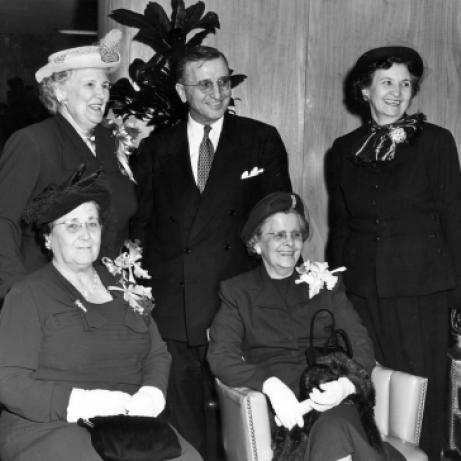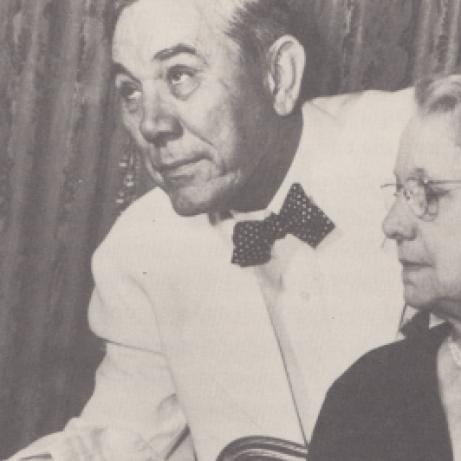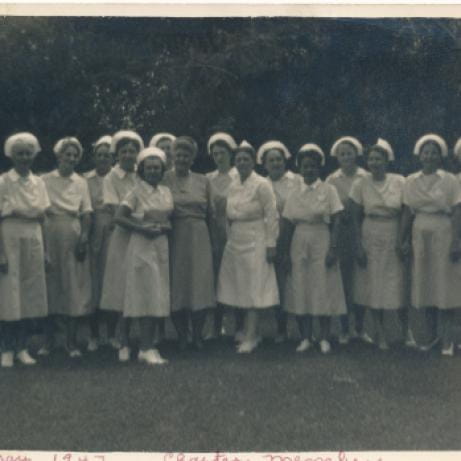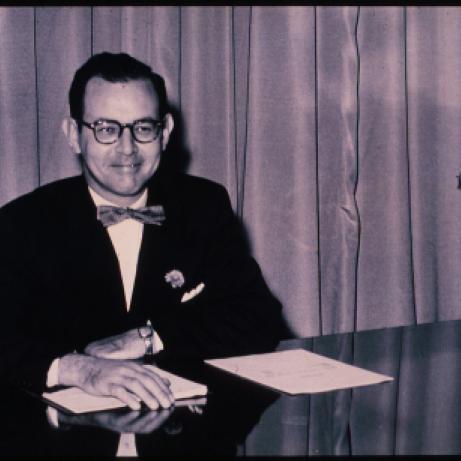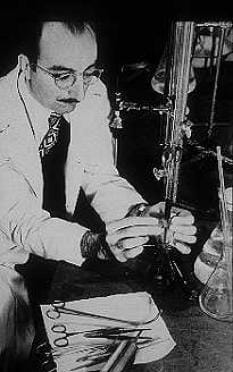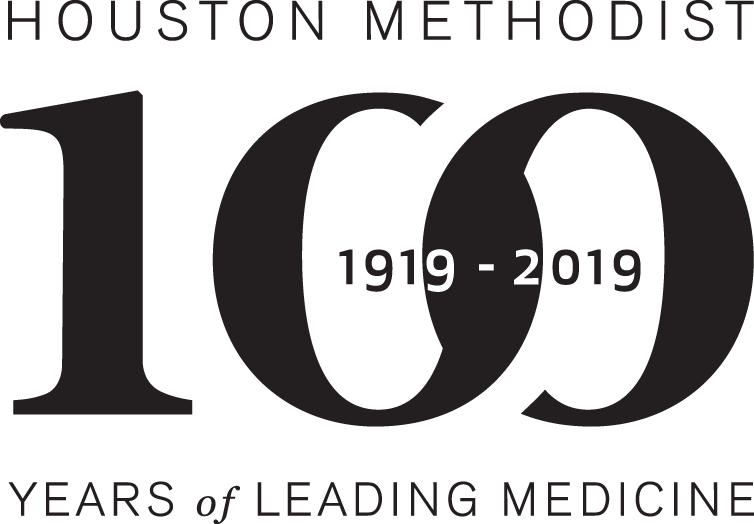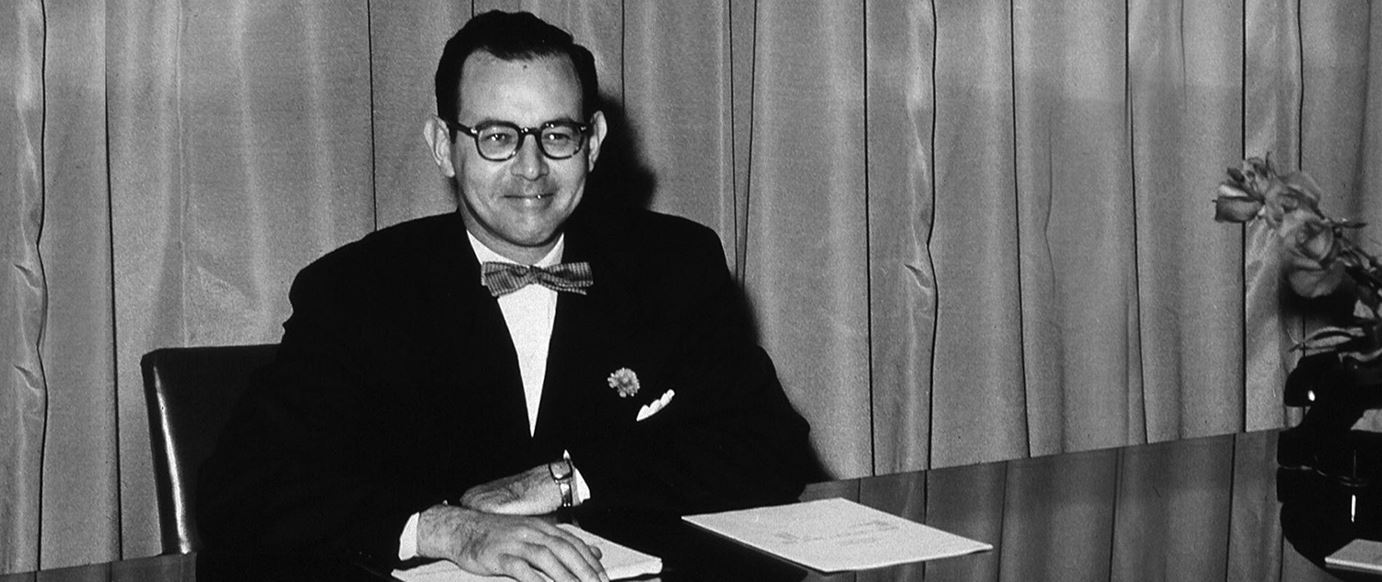1941: The Methodist Hospital graduates nurses at record rates to support troops during World War II
At the onset of World War II, the federal government anticipates a shortage of nurses and establishes a U.S.Cadet Nurse Corps. The school continues to grow over the years, affiliating with the University of Houston in Sept. 1941 to address the labor shortage created by World War II. By the end of the war, a record 80 women are enrolled in the school of nursing at Methodist.The school would ultimately close in 1961 due to increased costs and decreased enrollment after the war.
1942: Hospital Relocation
Monroe D. Anderson establishes the M.D. Anderson Foundation in 1936, and later purchases 134 acres from the City of Houston that would become the Texas Medical Center. An undesignated parcel of land at the Texas Medical Center is offered to the board of trustees at The Methodist Hospital. Discussion of this land in board meetings began in 1942 and continued for the next year and a half. Though the Methodist trustees are keenly interested in the Texas Medical Center, the first of its kind in the United States, the Anderson Foundation waits until the close of the war to make its offer. Meanwhile, the board remains undecided about where to build a new Methodist hospital.
1944: Gathering Innovative Ideas
Josie Roberts and Ella Fondren travel across the United States to study the design of state-of-the-art hospitals and luxury hotels. Ted Bowen later describes Roberts’ role in the design of the hospital as indispensable: “she spent literally thousands of hours designing that building, to the nth detail of its operation.” The hospital would be considered one of the most modern hospitals in the United States upon completion.
1945: New Building Campaign
At the request of William N. Blanton and Claud Hamill, Oilman Hugh Roy Cullen and his wife Lillie commit $1 million to Methodist. Within a 4-day period, they give $4 million to four different hospitals–Methodist, St. Luke’s, Hermann Hospital and Baptist Memorial Hospital. Their gift assures the building of a new Methodist hospital and the MD Anderson Foundation’s commitment of land and a challenge grant secures the hospital its future location in the Texas Medical Center. An additional bequest from Laura Ghent Graves and pledge from Mr. and Mrs. Walter L. Goldston launches the new building campaign.
1947: The Methodist Hospital Service Corps
Kathleen Ellis establishes The Methodist Hospital Service Corps to provide support services for patients The Service Corps enthusiastically writes letters on behalf of patients, staffs the information desk, prepares babies to go home and works to “make life more significant through unselfish service to others, to bring home, hospital and church into closer relationship, and to help and create and maintain a Christian atmosphere in a Christian hospital.”
1948: Nonprofit Hospital Opens
In 1944, Humble Oil and Refining Company contributes $500,000 for the construction of San Jacinto Memorial Hospital in Baytown. Confirming the need for a first-class community health care facility, local businesses and individuals supplement the gift with $1.2 million. In 1948, the nonprofit hospital opens its doors, which would become part of The Methodist Hospital system decades later.
1948: Ted Bowen Joins The Methodist Hospital
Josie Roberts and Ella Fondren recruit Ted Bowen, a graduate of Washington University’s Hospital Administration Program, as assistant administrator. Bowen joins The Methodist Hospital after a year of residency at Barnes Hospital, a 900-bed general hospital run by the Methodist church and affiliated with Washington University. He is among the first class of students to receive a graduate degree in hospital administration from Washington University’s School of Medicine.
1948: DeBakey’s Affiliation Begins
Dr. Michael E. DeBakey arrives in Houston as the chairman of the Department of Surgery at Baylor College of Medicine and begins taking patients to The Methodist Hospital DeBakey opts to take his patients to Methodist, setting into motion a 54-year affiliation between the two institutions. At this early stage in his career, DeBakey primarily performs general surgery; however, he has already made a name for himself by winning the Legion of Merit award for implementing mobile army surgical hospital (MASH)units during World War II and inventing a roller pump at Tulane University to assist in blood transfusions.
